The Model Engineer Exhibition 2009
Report and photos by COLIN BISHOP and DAVE ABBOTT
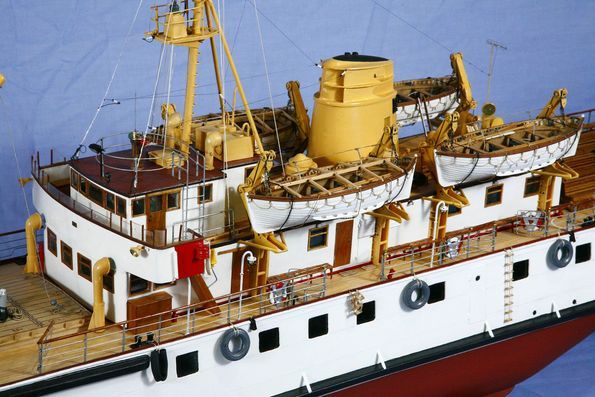
RMS Scillonian from David and Warren Brown
December 2009 saw the Exhibition revert from Ascot back to its previous venue and timing at Sandown Park racecourse. The general consensus seems to have been that this was a good move. The more compact space layout at Sandown lends itself better to events of this type with the traders and club stands downstairs and the competition displays immediately above. Car parking is better too.
The level of marine entries into the competition remained uncomfortably low although standards of individual entries were well up to scratch. Possibly one reason for the dearth of boat entries was that while the Exhibition was widely advertised in the preceding months, there was virtually no mention of model boats in the text. Relying on the regular entrants who already know the ropes is not sufficient, there is a need to attract new blood to the competition classes – the models are out there and can be seen at other shows. Twenty years ago the Model Engineer Exhibition was the undisputed biggest show in town but now it has plenty of rivals around the country and will need to work hard if it is to regain something of its old pre-eminence. These points have been made to the organisers by a number of those involved with the show so we must hope that the encouraging improvements seen in 2009 will be developed further.
The low competition entry was offset by some superb model boat club stands on the ground floor plus an impressive display by the Model Yachting Association so there was a good selection of marine models on show overall. On the business side though, ModelPower was the only trader supplying items of direct interest to the boating community.
Competition classes
Moving on to these, Martin Ranson of the Bridlington Model Boat Society entered two absolutely immaculate steam launches, SL Florence and SL Eljay in Class C1. Martin builds absolutely everything himself including the steam plants, while the documentation supplied with the models for the judges and the public was the best I have ever seen. Florence was awarded a Gold Medal and Eljay a Silver and the photos show why!
Class C3 for non working scale models (1:1 to 1:48) featured an interesting joint entry of the Scilly Isles ferry Scillonian II. The model had been started by Warren Brown but was completed by David as a tribute to his late brother. I was especially taken by this model as I can recall travelling on the vessel in the mid-1960s with Prime Minister Harold Wilson aboard. His wife had chosen to take the helicopter, which was just as well as it was quite a rough trip! The model itself was awarded a Very Highly Commended certificate.
Also in C3 was Clive Dent’s New England lobster boat, a well constructed straightforward model incorporating appropriate representative detail, some of which had been computer generated. It all made for a colourful and attractive exhibit which earned it a Commended certificate.
The number one model in Class C4 (1:49 to 1:384 scale) was a 1:192 scale waterline model of the battleship HMS Resolution from David Andrews which was awarded a Gold Medal and the Earl Mountbatten of Burma trophy for best naval model. Although later than the Queen Elizabeth class fast battleships, the R class were slower and had a revised protection configuration with the main armour deck being carried one deck higher than in the QEs. The lower speed and stability considerations meant that they did not lend themselves to the major rebuilds carried out on three of the earlier class between the wars. David had captured the essence of this obsolescent yet still powerful ship with its dark grey colour scheme depicted as in 1939 at the time his father was serving in her. Construction of the model commenced in 1978 but it was afterwards laid aside for many years and work only recommenced intermittently from 1997. One result of this 30 plus year construction period is that the model is built entirely of ‘traditional’ materials, parana pine and obechi for the hull with some plywood and balsa and decks and upperworks faced with cartridge paper and Bristol Board (card). Hull plating is paper sealed with shellac and dodgers are made from cigarette paper. Various metals were used, brass copper and aluminium plus the metal from old paint and toothpaste tubes. Some of the boats were moulded from tissue paper over a former and stiffened with PVA glue and shellac. Perhaps the finishing touch was that David had made the studded chain for the anchors and paravane gear himself using a method developed by the late Norman Ough and published in the September 1969 issue of Model Boats. These traditional materials have proved very stable over the last 30 years and I would venture to suggest that they will probably well outlast the styrene construction used in many models made today.
David Brown also made an appearance in Class C4 with yet another trio of nicely presented submarines. This time we had HMS Swordfish 1916, HMS R3 of 1918 and HMS H51 also completed in 1918 to an American design. Swordfish was of particular note, being the RN’s first steam powered submarine and David had taken the opportunity to include lots of above deck detail including guns with hatches on top of them and the torpedo loading arrangements, plus it’s not often that you see a submarine with a funnel either! Swordfish was awarded a Silver Medal with a Bronze going to H51 and a Highly Commended certificate to R3.
Class C5 is for working sailing ships and Richard Chesney gave us his Bristol Channel Pilot Cutter Hirta which was a large impressive model. He received a Very Highly Commended certificate in return while his detailed research also earned him the Maritime Trust and H.V. Evans trophies, so not a bad haul!
In Class C6 for non-working sailing ships, Michael Puttock’s Armed Tender HMS Supply, was awarded a Gold Medal together with the Maze Challenge Cup for best pre-1820 sailing ship. HMS Supply’s brief claim to fame was as flagship of the ‘First Fleet’ which carried a mixture of settlers, convicts and military to found the colony at Botany Bay in Australia, arriving in1788. Mr Puttock had obtained copies of the original plans of the vessel from the National Maritime Museum which showed hull details only so it was necessary to use contemporary sources to reproduce the masting and rigging. The model was constructed in ‘Dockyard Style’ to show the construction and framing and was nicely presented in a large showcase which did make it a little difficult to photograph under the Exhibition lighting conditions. Close study by the judges confirmed what a superb piece of work the model is with construction following very closely on the original vessel. A second period ship subject, this time by Kenneth Clark, was the Navy Board style HMS Fly, an eight gun ketch rigged sloop dating to 1752. The pear and ebony construction, together with red and blue paint gave the model a rich lustre and a most attractive appearance whilst still showing the construction. Less obvious to the casual viewer was the interior construction of the ship’s powder magazines and pump housing which could be glimpsed between the hull framing.
Michael Gilbert took a Silver Medal in this class with his Northumberland Coble. This was a model that didn’t make a tremendous initial impact but got better the more you studied it. Scale it up and you felt you could step aboard. The paint finish also captured the sheen of the actual boat as shown in an accompanying photograph.
A model relating to a much earlier age was entered by Ian Stranack, of the Spanish caravel La Garza in which Juan de Bermudez is thought to have discovered the islands of Bermuda, c1505. This was an unusual and nicely built model which was awarded a Highly Commended certificate.
Two other entries by Kenneth Clark completed the tally for Class C6. These were open boats, a 22ft yawl dating from 1850 and a 25ft cutter from 1886. Both were exquisite examples of their type and were awarded Commended certificates.
Regrettably there were no entries for Class C7 for non scale functional boats or Class C8 for miniatures, the latter being particularly disappointing as we have had some excellent models in this category in recent years.
There was only one entry in Class C9 for Marine Kits, but it was a good one. Brian Shreeve had shown just what can be done with the French Tuna Fishing Boat kit from Billings. The hull was plank on frame and the above decks detail, masting and rigging really brought out the pleasing design of this classic fishing boat design. A nice touch was the way the sails were actually bellied out and drawing as opposed to the rather flat lifeless appearance you can often see on models. Brian was awarded a Silver medal and the Model Boats Kit Class Trophy.
So, another year and another Exhibition. Planning for the 2010 Model Engineer Exhibition is already well underway with determination all round to build on the commercial success of the December 2009 event. Hopefully, it will see greater support for the marine competition classes and some model boating trader presence. Remember, if you do not wish to enter the competition, there is a Loan Class which gives the opportunity to exhibit your models where they can be appreciated by other modellers and the general public alike. This all helps to showcase our hobby and encourage people to take it up and you get a free pass to the show too!
(Clare Hiscock is the Event Manager for MyHobbyStore and she would welcome inquiries from clubs and traders concerning the 2010 event. She can be contacted on tel: 01689 869886 or email: [email protected] - Editor)
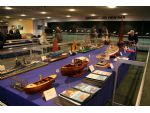
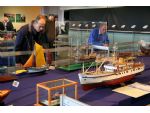
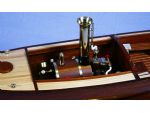
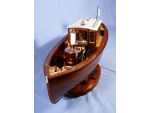
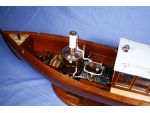

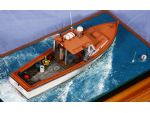
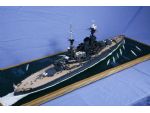
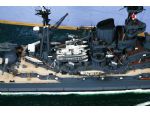
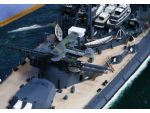
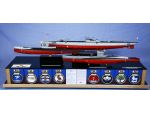
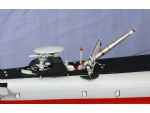
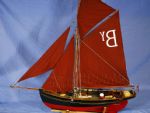
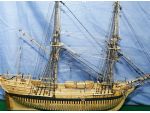
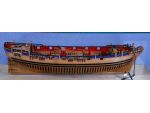
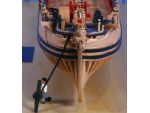

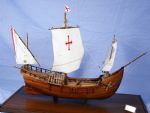
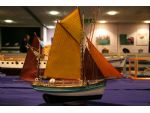
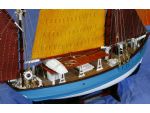
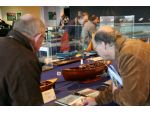
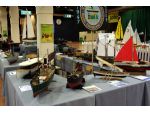

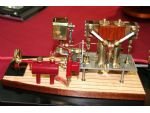
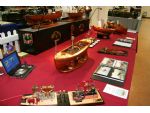




 Make sure you never miss out on the latest news, product reviews and competitions with our free RSS feed
Make sure you never miss out on the latest news, product reviews and competitions with our free RSS feed


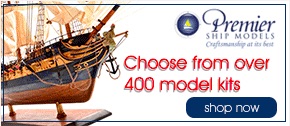

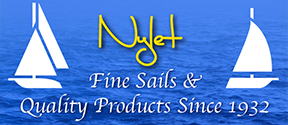






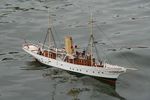
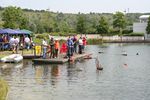

 Register
Register Log-in
Log-in



